Class Aves Family Hirundinidae | Phylum Chordata Order Passeriformes Rank Species | |
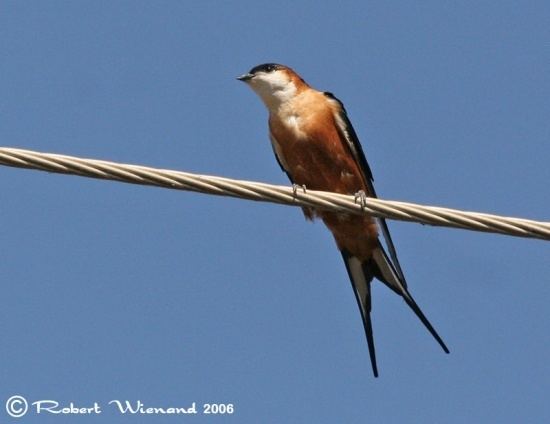 | ||
Similar Grey‑rumped swallow, Red‑breasted swallow, Saw‑wing, Lesser striped swallow, Ethiopian swallow | ||
Mosque swallow
The mosque swallow (Cecropis senegalensis, is a large swallow. It is a resident breeder in much of Sub-Saharan Africa, although most common in the west. It does not migrate, but will follow the rains to some extent.
Contents
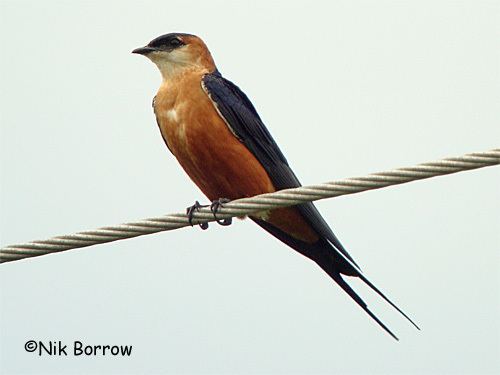
Description
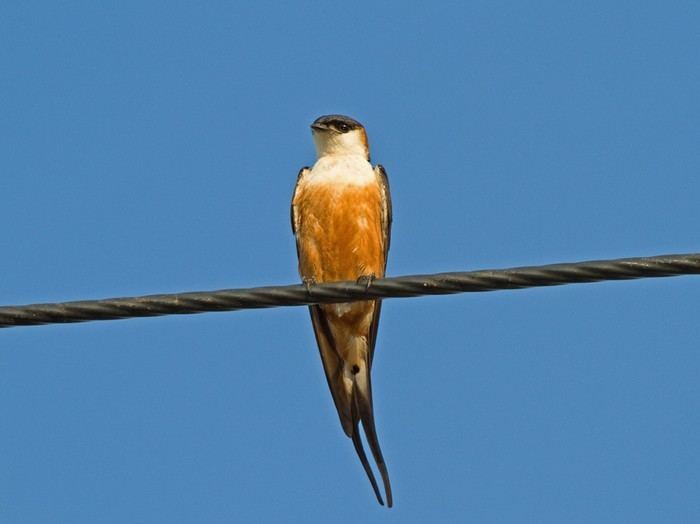
The mosque swallow is the largest and heaviest species of African swallow, resembling a big red-rumped swallow Cecropis daurica. The crown, upperparts and tail are glossy dark blue, the lores and sides of the head are whitish forming a collar. The rump is dark rufous while the throat and upper breast are pale rufous, shading to dark rufous on the remainder of the underparts. Very pale underwing coverts contrast with the dark flight feathers. Females are similar to males but have shorter tail streamers. Juveniles are browner. Mosque swallows are 21–23 cm in length.
Distribution
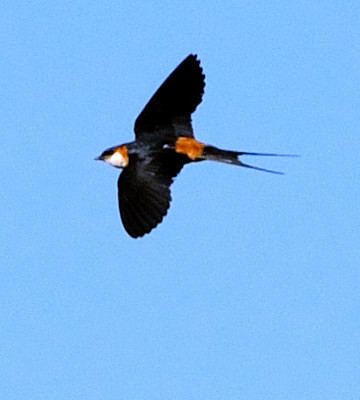
The Mosque Swallow is found from southern Mauritania and Senegal east to western South Sudanthen south to Namibia, northern Botswana, Zimbabwe, Mozambique and north eastern South Africa.
Habitat
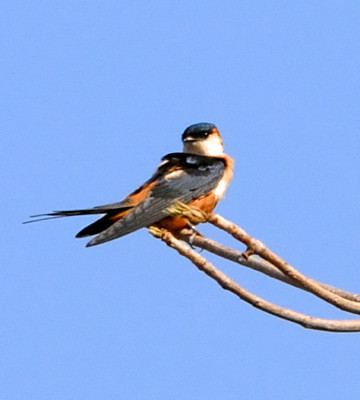
In southern Africa the Mosque swallow is a woodland bird, preferring dense broad leaved woodland with mopane (Colosphermum mopane) but also miombo (Brachystegia spp), with scattered baobabs (Adansonia digitata) and leadwoods (Combretum imberbe). In West Africa prefers open habitats such as forest clearings and savanna, also around villages and towns.
Habits
The mosque swallow feed on flying insects such as ants, termite alates and flies, normally foraging 2-30m above the ground. It is attracted to termite emergence events and bush fires when it can gather in flocks of up to 30 birds, Ithas a slow rather falcon-like flight with a lot of gliding and often forages high above the woodland canopy in association with other hirundines and swifts.
The mosque swallow nests either solitarily or in small groups. The nest is a made of mud pellets and lined with grass and feathers. Its shape is that of a gourd and it has a long entrance tunnel attached to the side. The nest is often situated in a tree cavity, very often in a baobab, but also in or under tree branches, in buildings or road culverts. They breed all year round, with a peak of breeding activity in August–April. The clutch is 2-4 eggs.
Taxonomy and subspecies
Formerly placed in the genus Hirundo the mosque swallow and its relatives have been shown by molecular studies to be a separate clade and been given the generic bane Cecropis.
There are three currently recognised subspecies which are:
